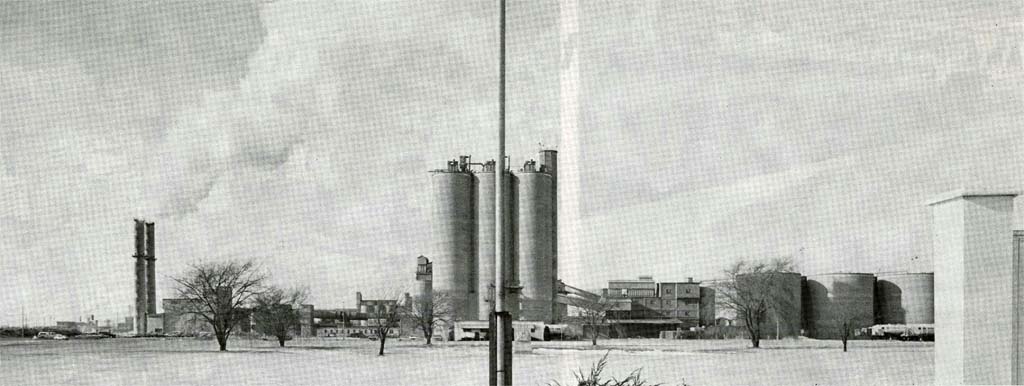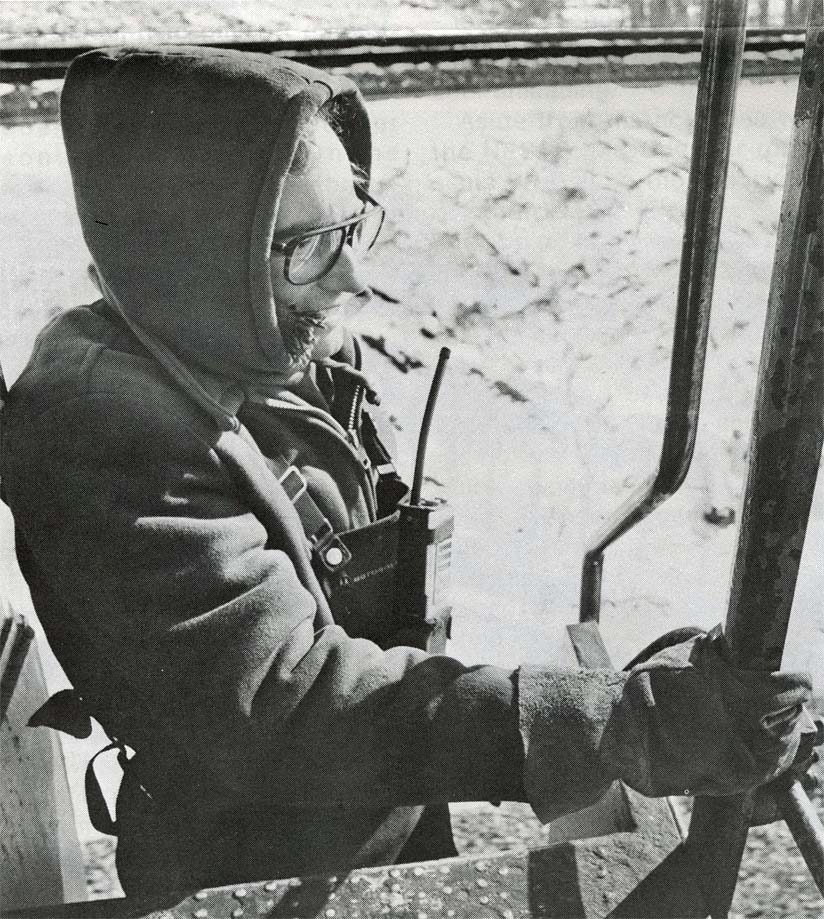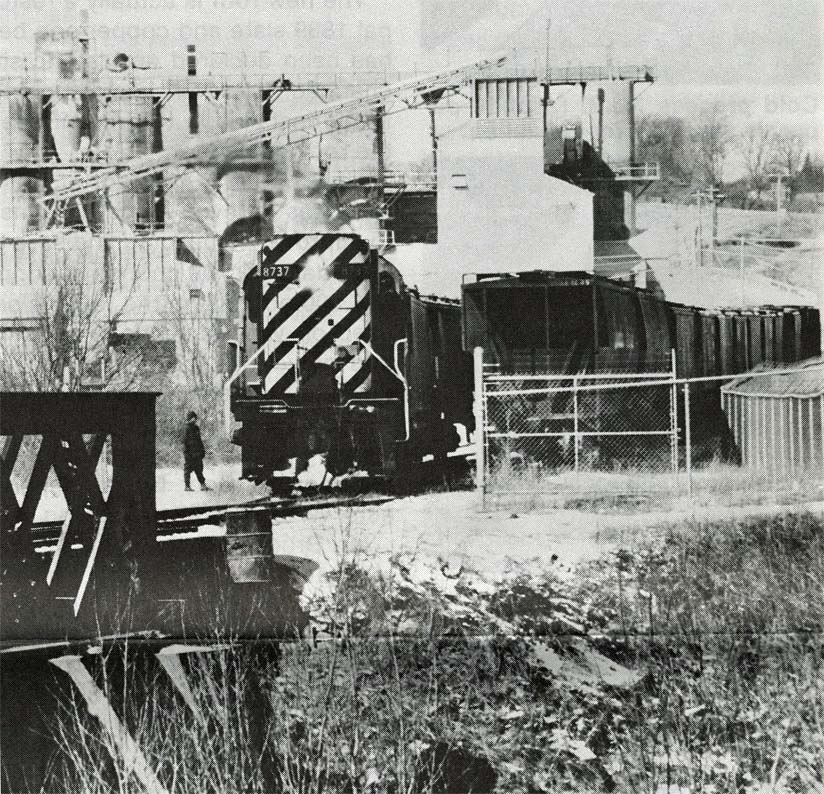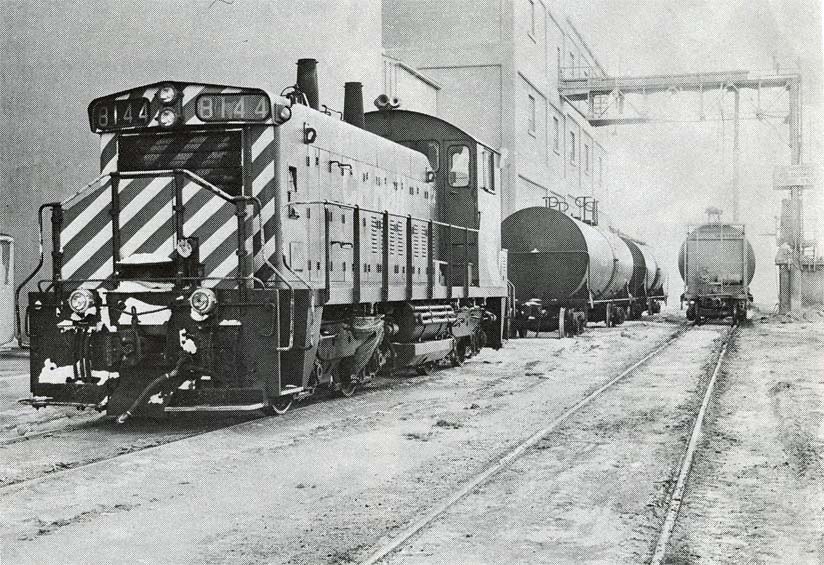
Number 6
May 14, 1980
Rely on Railway

LONDON ONTARIO - Business in this area is expected to increase, with the completion of the new $20 million Federal White Cement plant 20 miles east of here.
The first white Portland cement plant in Canada, it sends the bulk of its production to Florida and Georgia.
Limestone, used in making cement, is abundant in southwestern Ontario, a contributing factor in Federal's decision to locate here.
The new plant is near a massive Canada Cement Lafarge installation 20 miles from St. Marys Cement. Both of these plants use CP Rail for moving cement to their markets.

Canada Cement Lafarge recognized the importance of CP Rail access when building its plant 24 years ago. The operation features covered-hopper load-out facilities on its industrial siding.
The plant produces a wide variety of cements, used in masonry, pre-stressed structures, and bridge work, making concrete blocks and for use in oil wells.
While Lafarge has plants in eight provinces, "no other plant would make more types of cement than this one," says plant manager Andrew Robb.
For both Lafarge and St. Marys, a much older operation, there has been considerable shipment of cement by CP Rail to booming Alberta. Much of the production of both plants also moves by rail to the Sudbury basin and elsewhere in Northern Ontario for use as backfill in mines.

St. Marys opened in 1912 in the historic Thames River community of St. Marys, an impressive town with limestone public buildings, churches, and residences.
The original plant has been replaced over the past few years by a massive new facility in which one large kiln took the place of five smaller ones, explains Al Harley, the company's director of marketing services. Like Lafarge, this relatively new plant makes a variety of cements.
Rail service to St. Marys has evolved during the years. Cars have become larger and covered hoppers have replaced box cars. The plant also makes use of pressure-flow cars.
Shipper-leased pressure-unload cars are also in use by the Federal plant and it is common to see Southern Railroad cars there as well, just as it is to see cars from the Detroit Toledo & Ironton Railroad at Nearby Domtar Chemical's lime production facilities.

Local limestone has also given rise to this separate lime industry. Similar to Federal on the cement side, Domtar Chemicals' lime operation, the largest in Canada, has put the marketing accent on southbound Canada-U.S. trade with CP Rail.
The iron and steel industry is a major user, with lime acting as a flux for steel. It is also used extensively by the pulp and paper industry. Chemical lime is used in the making of soda ash, calcium carbide, fertilizers, even sugar refining, and in crushed form, called glass rock, it is used in glass-making.
"While this plant has been around for a long, long, time," says Maurice Benjamin, shipping supervisor at Domtar Chemicals, "there has been a lot of change over the years. Lime now is made in a highly-automated continuous production cycle and product quality has improved enormously."
Producing lime from limestone is a business which dates from the latter part of the 19th century in the area east of London.

"We get excellent rail service," says Mr. Benjamin. Over the years, box car service has been replaced by covered hoppers. During the 1950's Domtar Chemicals built rapid load-out storage silos and expanded access track. In 1969-1970, load-out facilities were expanded.
Much of Domtar Chemicals' lime production moves by CP Rail to the U.S. steel mills in Detroit and suburban Buffalo, N.Y. Other facilities in the Beachville area, owned by Stelco and Dofasco, make lime for use in their steel mills at Hamilton, Ontario. Algoma Steel has its own lime operations at Sault Ste. Marie, Ontario.
Large volumes of lime from the Beachville area also move by rail to northern Ontario mines for use in the leaching extraction process.
 and is reprinted here with their permission.
All photographs, logos, and trademarks are the property of the Canadian Pacific Railway Company.
and is reprinted here with their permission.
All photographs, logos, and trademarks are the property of the Canadian Pacific Railway Company.